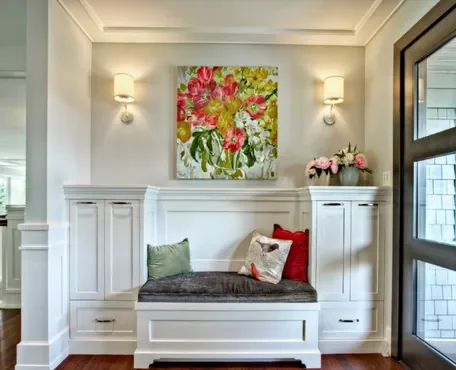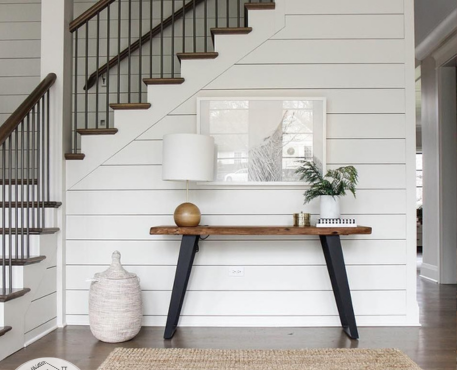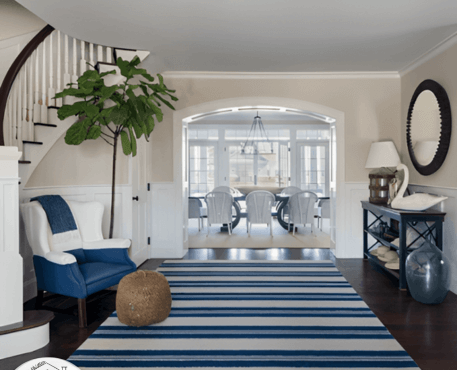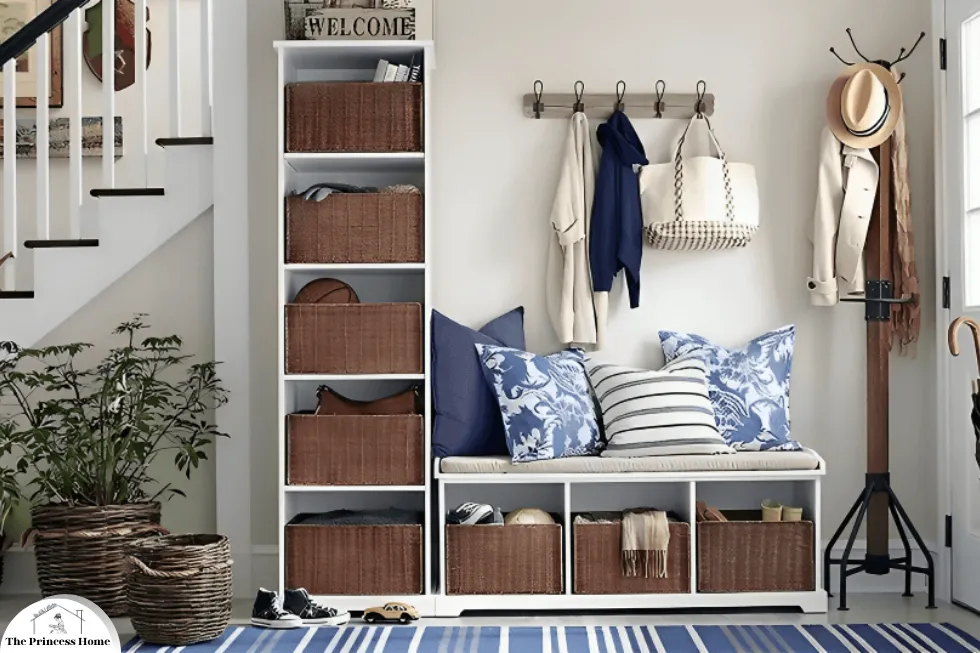
The entryway of your home serves as a crucial space, acting as a gateway between the outside world and your personal sanctuary. It’s where you welcome guests and transition from the hustle and bustle of the day to the comfort of your abode. To ensure this space is not only functional but also inviting, consider implementing the following expert tips and creative ideas.
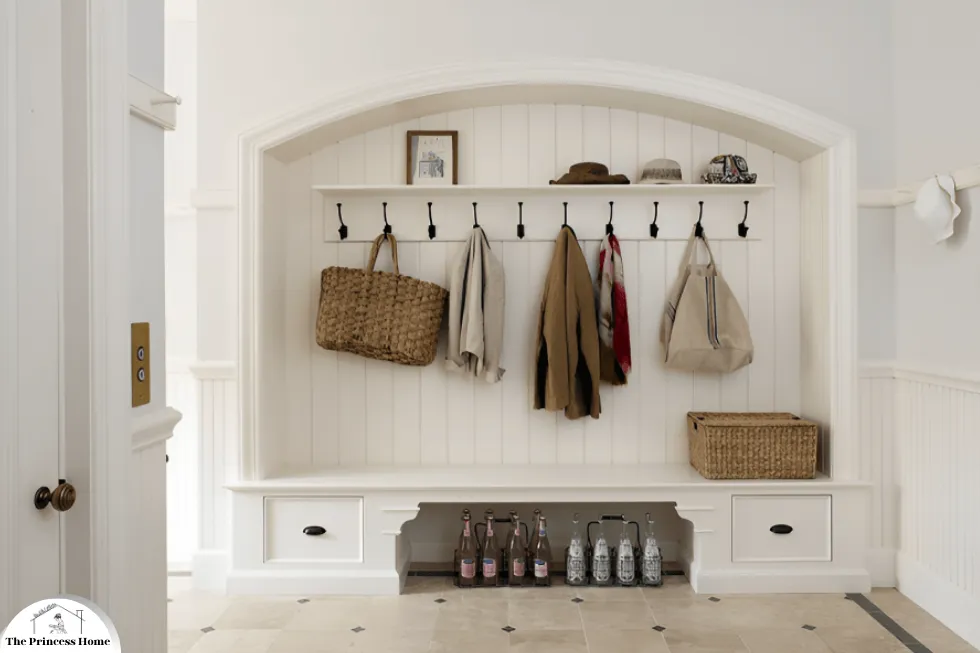
**Maximizing Functionality**
The entryway of a home serves as the first impression, setting the tone for the rest of the space. Beyond its aesthetic role, the entryway plays a crucial functional role as a transition area, where belongings are dropped off and picked up. To make this space more efficient and organized, investing in smart entryway storage solutions is key. In this article, we will explore various tips and ideas to enhance entryway storage, making it both functional and stylish.
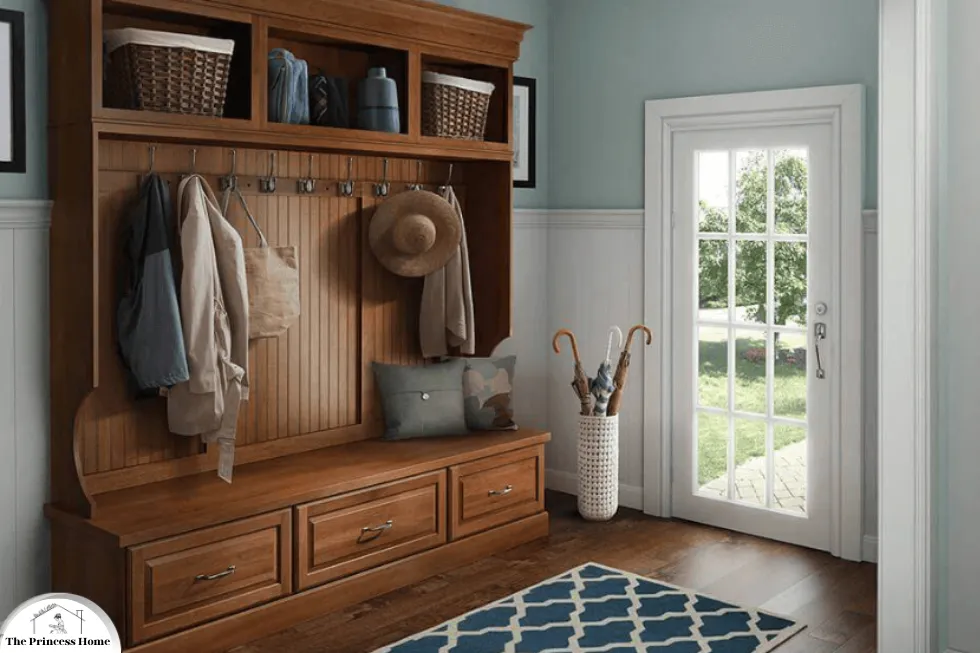
1.*Ample Storage Solutions
Elevating Functionality and Style: Crafting a Welcoming Entryway The foundation of a functional entryway lies in its storage capabilities. Coats, hats, shoes, umbrellas, and various odds and ends need a designated spot. Opt for storage options that suit your space and style:
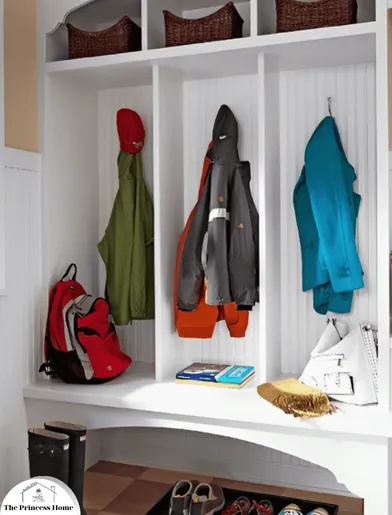
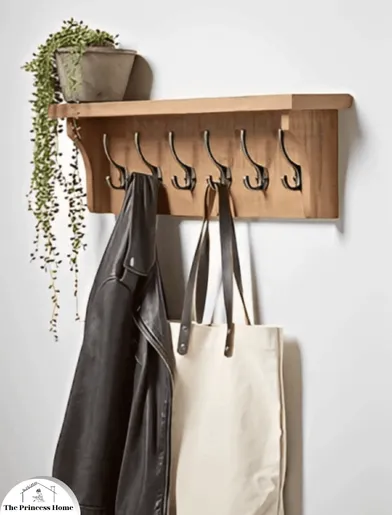
2.*A Coat Rack
A classic choice that keeps outerwear organized and easily accessible. A coat rack is a classic choice for keeping outerwear organized and easily accessible. It is a simple yet effective way to store coats, jackets, hats, and bags. Coat racks come in a variety of styles and materials, so you can find one that fits your décor and needs.
Some of the benefits of using a coat rack include:
1.Organization:
A coat rack keeps your outerwear off the floor and out of the way. This can help to create a more organized and tidy entryway or mudroom.
2.Accessibility:
A coat rack is easy to use, even when you’re carrying a lot of things. You can simply hang your coat up and go, without having to fumble with drawers or closet doors.
3.Style:
Coat racks can add a touch of style to your home. There are many different styles of coat racks available, so you can find one that complements your décor.
If you’re looking for a simple and effective way to keep your outerwear organized and accessible, a coat rack is a great option. There are many different styles and materials to choose from, so you can find one that fits your needs and décor.
Here are some additional tips for choosing a coat rack:
Consider the size of your entryway or mudroom. Make sure the coat rack is large enough to accommodate all of your outerwear. Think about the style of your home. Choose a coat rack that complements your décor.
Consider the materials. Coat racks are made from a variety of materials, including wood, metal, and plastic. Choose a material that is durable and easy to care for.
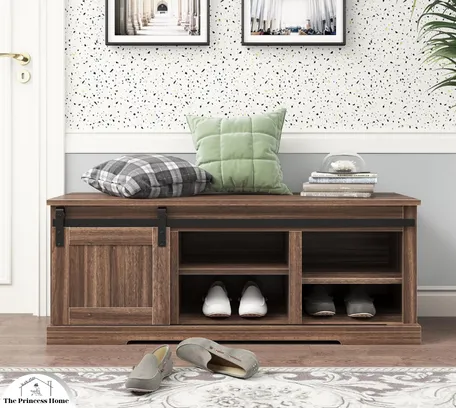
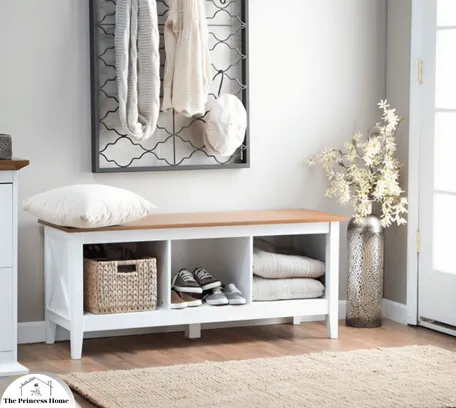
3.*A Bench with Storage
Combines seating with hidden storage, providing a convenient area to put on or take off shoes. A bench with storage is a versatile piece of furniture that can be used in a variety of ways. It can provide a convenient place to sit, while also offering hidden storage space for shoes, coats, bags, or other items. This makes it a great choice for entryways, mudrooms, bedrooms, and even living rooms.
Benches with storage come in a variety of styles, so you can find one that fits your décor. Some benches have lift-top lids that reveal storage space, while others have drawers or cubbies. There are also benches with built-in shoe racks, which are perfect for keeping your shoes organized and out of the way.
Here are some of the benefits of using a bench with storage:
1.Organization:
A bench with storage can help you to keep your entryway or mudroom organized. It can provide a place to store shoes, coats, bags, and other items that you need to grab when you’re leaving the house.
2.Convenience:
A bench with storage can be a convenient place to put on or take off shoes. The seat provides a comfortable place to sit, while the storage space can be used to store shoes that you’re not wearing.
3.Style:
Benches with storage come in a variety of styles, so you can find one that fits your décor. This makes them a versatile piece of furniture that can be used in a variety of rooms.
If you’re looking for a functional and stylish piece of furniture for your home, a bench with storage is a great option. It can provide seating, storage, and convenience all in one.
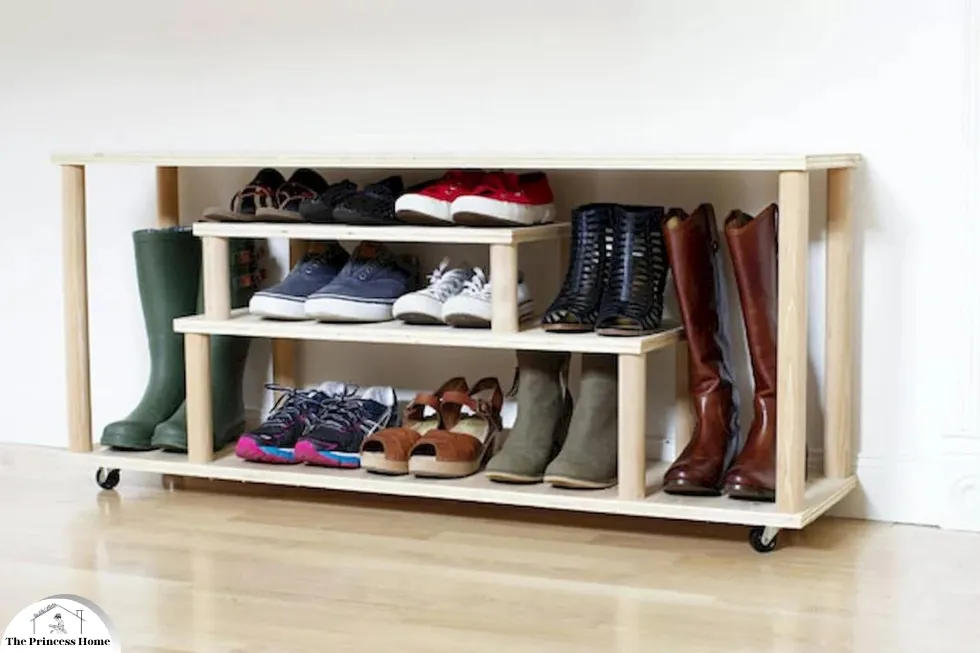
4.*A Shoe Rack
Perfect for keeping footwear neatly arranged and preventing clutter. A shoe rack is a great way to keep your footwear neatly arranged and prevent clutter. It can be a freestanding unit that you place in your entryway or bedroom, or it can be built-in to your closet. Shoe racks come in a variety of styles and materials, so you can find one that fits your décor and needs.
Here are some of the benefits of using a shoe rack:
1.Organization:
A shoe rack keeps your shoes off the floor and out of the way. This can help to create a more organized and tidy entryway or bedroom. Shoes neatly arranged in a shoe rack Opens in a new window. Shoes neatly arranged in a shoe rack
2.Accessibility:
A shoe rack is easy to use, even when you’re in a hurry. You can simply grab the pair of shoes you need and go.
3.Space-saving:
Shoe racks are a great way to save space in your home. They can be placed in small spaces, such as under a bed or in a closet.
Versatile: Shoe racks come in a variety of styles and materials, so you can find one that fits your décor.
If you’re looking for a way to keep your shoes organized and out of the way, a shoe rack is a great option. It is perfect for keeping footwear neatly arranged and preventing clutter.
Here are some additional tips for choosing a shoe rack:
Consider the size of your collection. Make sure the shoe rack is large enough to accommodate all of your shoes.
Think about the style of your home. Choose a shoe rack that complements your décor.
Consider the materials. Shoe racks are made from a variety of materials, including wood, metal, and plastic. Choose a material that is durable and easy to care for.
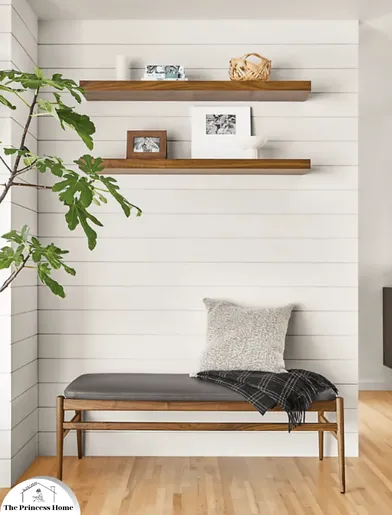
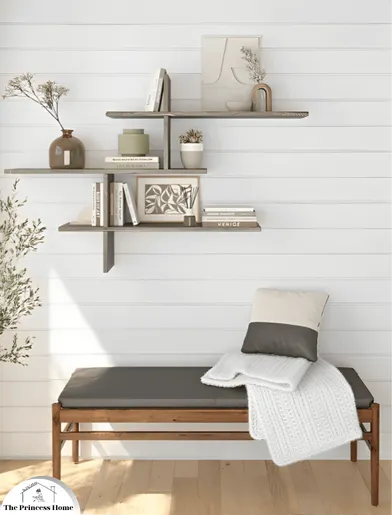
5.*A Wall-Mounted Shelf
Ideal for displaying decorative items while offering functional storage space. A wall-mounted shelf is a great way to display decorative items while also offering functional storage space. It can be used in a variety of rooms, including the living room, bedroom, bathroom, and kitchen. Wall-mounted shelves come in a variety of styles and materials, so you can find one that fits your décor.
Floating shelves are a versatile and visually appealing option for entryway storage. They can be installed at varying heights to accommodate different items, from decorative elements to everyday essentials. Utilize baskets or bins on the shelves for items that you want to keep out of sight while maintaining a clean and minimalist look.
Here are some of the benefits of using a wall-mounted shelf:
1.Organization:
A wall-mounted shelf can help you to keep your belongings organized and off the floor. This can create a more tidy and spacious appearance in your home.
2.Decoration:
A wall-mounted shelf can be used to display decorative items, such as photos, books, plants, and souvenirs. This can add a touch of personality and style to your home.
3.Functionality:
A wall-mounted shelf can also be used to store items, such as books, magazines, games, and remote controls. This can free up space on your countertops and tables.
4.Space-saving:
Wall-mounted shelves are a great way to save space in your home. They can be placed in small spaces, such as above a door or window.
If you’re looking for a way to add both storage and style to your home, a wall-mounted shelf is a great option. It is ideal for displaying decorative items while also offering functional storage space.
Here are some ideas for how to arrange decorative items on a wall-mounted shelf:
1.Group items by color. This is a great way to create a cohesive look on your shelf. For example, you could group all of your blue items together, all of your green items together, and so on.
2.Group items by theme. This is another great way to create a cohesive look on your shelf. For example, you could group all of your travel souvenirs together, all of your books about gardening together, and so on.
3.Mix and match items. If you’re feeling adventurous, you can mix and match different items on your shelf. This can create a more eclectic and interesting look. Just be sure to choose items that complement each other and that you love.
4.Add height and depth. To add visual interest to your shelf, try adding items of different heights and depths. This could include books, vases, figurines, and more.
5.Use empty space. Don’t be afraid to leave some empty space on your shelf. This can help to create a more balanced and airy look.
With a little creativity, you can easily arrange decorative items on a wall-mounted shelf to create a beautiful and functional display.
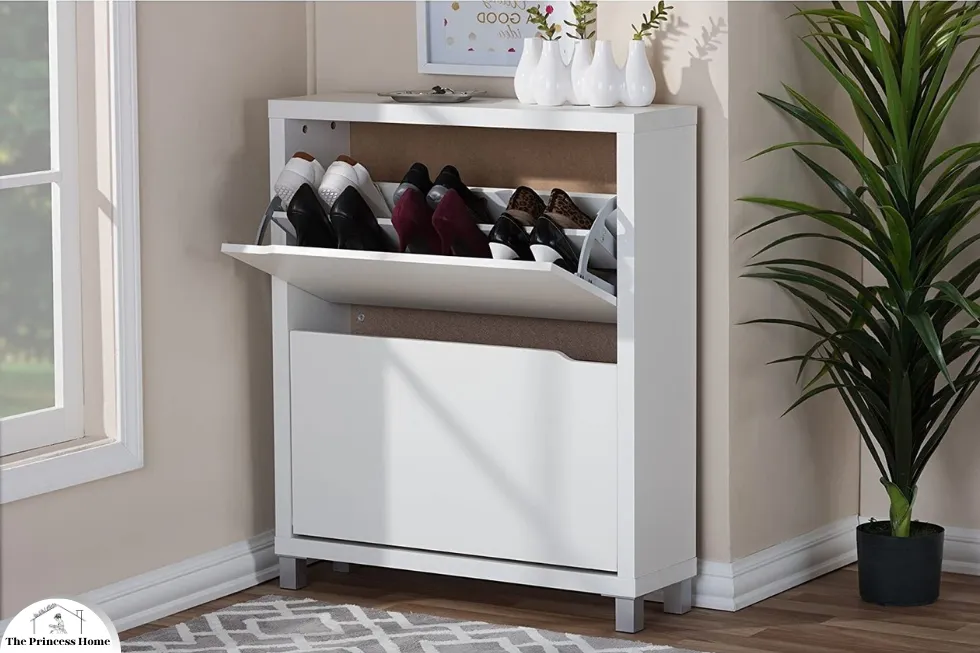
6.*A Cabinet
A cabinet is a piece of furniture with doors or drawers that provides concealed storage for items you want to keep out of sight. Cabinets come in a variety of styles and materials, so you can find one that fits your décor and needs. Provides concealed storage for items you want to keep out of sight.
Here are some of the benefits of using a cabinet:
1.Privacy:
Cabinets provide privacy for items you want to keep out of sight. This could include anything from valuables to sentimental items.
2.Security:
Cabinets can be locked to provide security for your belongings. This is a great option if you have children or pets who might be tempted to play with or damage your items.
3.Organization:
Cabinets can help you to keep your belongings organized and tidy. This can be especially helpful if you have a lot of small items that you need to store.
4.Decor:
Cabinets can also add style and sophistication to your home décor. There are many different styles of cabinets to choose from, so you can find one that complements your existing furniture and décor.
If you’re looking for a way to keep your belongings safe and secure, a cabinet is a great option. It can provide concealed storage for items you want to keep out of sight, while also adding style and sophistication to your home décor.
Here are some additional tips for choosing a cabinet :
1.Consider the size of the space. Make sure the cabinet is the right size for the space you have available.
2.Think about the style of your home. Choose a cabinet that complements your décor.
3.Consider the materials. Cabinets are made from a variety of materials, including wood, metal, and plastic. Choose a material that is durable and easy to care for.
4.Decide if you want a lockable cabinet. This is a great option if you have children or pets who might be tempted to play with or damage your items.
5.Set a budget. Cabinets can range in price from a few dollars to hundreds of dollars. Set a budget before you start shopping so you don’t overspend.
With these tips in mind, you’re sure to find the perfect cabinet for concealed storage in your home.
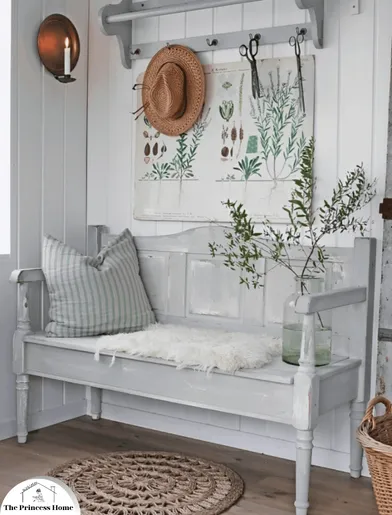
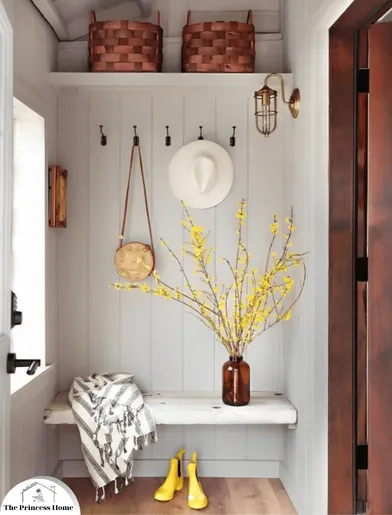
7.*Relaxing Seating Nook
Integrate a bench or chair into your entryway design. This not only offers a practical place to sit and remove shoes but also doubles as a space to rest bags and belongings. If you’re working with limited space, consider a bench with storage underneath, maximizing both comfort and functionality. Creating a relaxing seating nook in your entryway can indeed transform the space into a welcoming and functional area.
Here are some steps to integrate a bench or chair into your design:
1.Assess Your Space:
Measure the dimensions of your entryway to determine how much space you have to work with. This will help you choose the right-sized bench or chair that fits comfortably without overcrowding the area.
2.Choose the Right Furniture:
Select a bench or chair that suits your style preferences and complements the overall aesthetic of your entryway. If you opt for a bench, consider one with built-in storage underneath to maximize functionality in a limited space.
3.Consider Comfort:
Ensure that the seating you choose is comfortable for sitting, especially if it will be used frequently for tasks like putting on or removing shoes. Adding cushions or pillows can enhance comfort and add a touch of coziness to the nook.
4.Functional Accessories:
Incorporate hooks or shelves above the seating area to hang coats, hats, or bags, keeping them organized and easily accessible. This helps declutter the space and makes it more efficient for everyday use.
5.Personalize Décor:
Enhance the ambiance of the seating nook by adding decorative elements such as artwork, mirrors, or plants. These touches can infuse personality into the space and make it feel more inviting.
6.Ensure Accessibility:
Arrange the seating in a way that allows easy access to other areas of the entryway and doesn’t obstruct the flow of traffic. This ensures that the nook remains practical and functional for everyone using the space.
By following these steps, you can create a relaxing seating nook in your entryway that not only serves a practical purpose but also adds style and charm to your home.
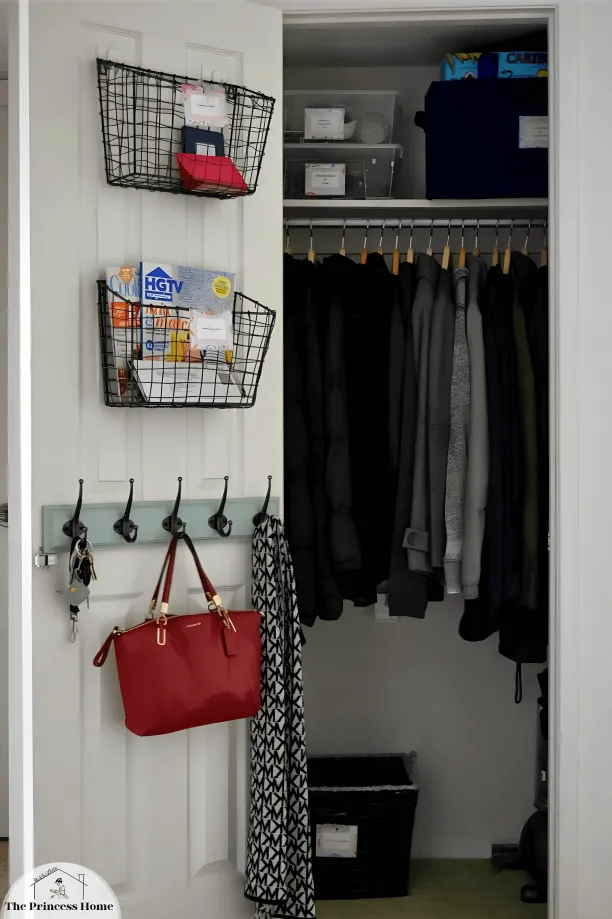
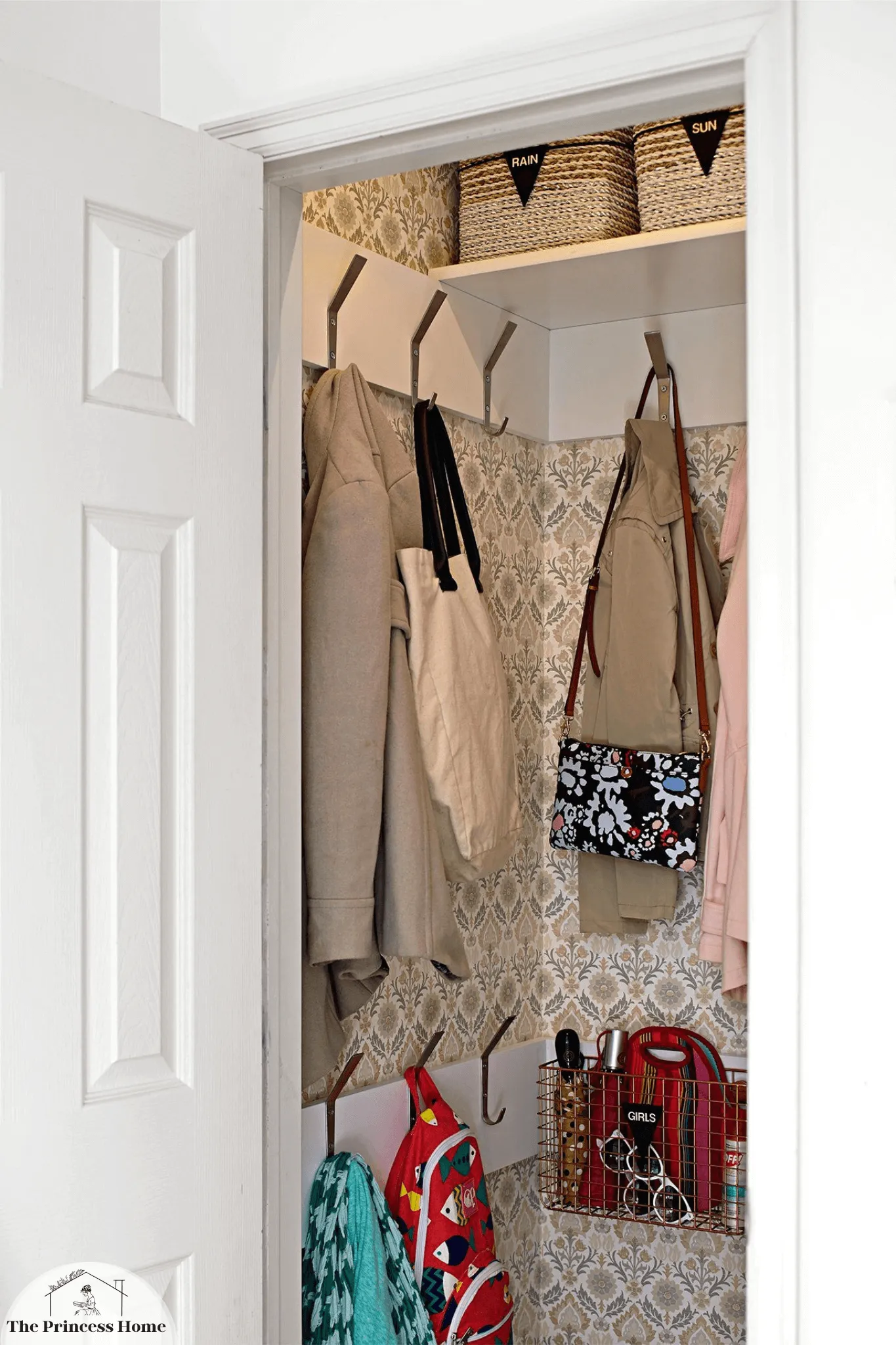
8.*Foyer Closet Organization
If your entryway includes a closet, make the most of this space by organizing it effectively. Install hooks on the inside of the door for bags and accessories, and use vertical shelving to maximize storage for shoes, seasonal items, and outerwear. Consider installing a closet organization system to optimize the available space.
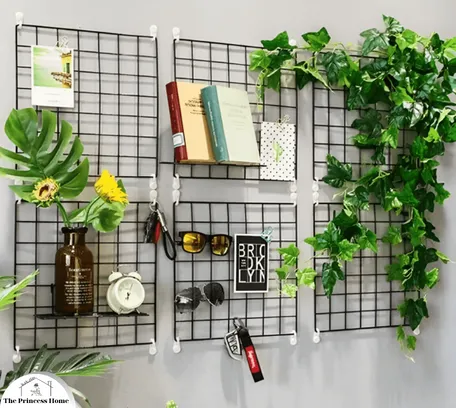
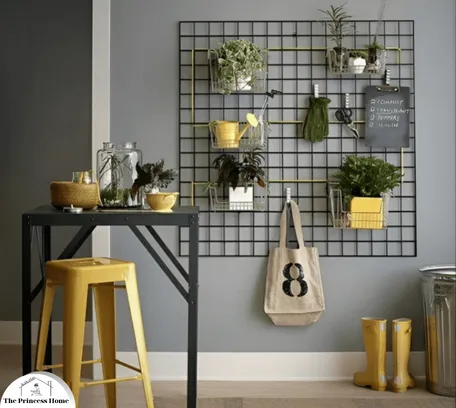
9.*Wall Grid Organizer
Get creative by crafting a DIY wall grid organizer. Use a grid of wire or wood to hang baskets, shelves, and hooks. This versatile solution allows you to customize the layout and easily adapt it to changing storage needs. It’s an excellent way to blend functionality with a unique aesthetic.
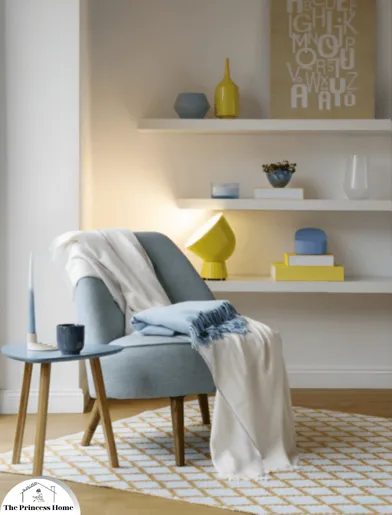
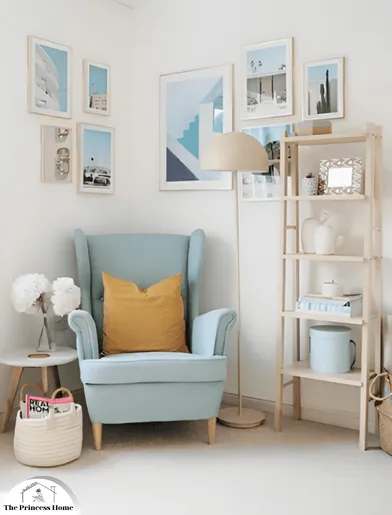
10.*Create a Reading Nook
If space allows, transform a corner of your entryway into a cozy reading nook. Incorporate a small bookshelf, a comfortable chair, and soft lighting. This not only adds a welcoming touch to the entrance but also provides a designated space for storing and enjoying reading materials.

11.*A living room-adjacent entryway
A living room-adjacent entryway is a versatile space that serves as a transition area between the outside world and the cozy comfort of your home. Here are some ideas to make the most of this space:
Here are some additional strategies to ensure functionality and separation:
1.Furniture Placement:
Use items like a console table or a bench with storage to create a visual divide between the entryway and living room.
2.Walls &Room Dividers:
Introduce architectural elements like half walls or room dividers to establish a physical barrier between the two spaces while maintaining an open feel.
3.Flooring Distinction:
Distinguish between areas using different flooring materials. Hardwood flooring in the entryway can seamlessly transition to carpet in the living room, offering both visual separation and cohesive design.
These expert tips and innovative ideas into your entryway design can transform it into a space that’s not only highly functional but also exudes warmth and personality. Storage solutions, comfortable seating, decorative accents, and strategic design can seamlessly combine to create an entryway that makes a memorable first impression on both guests and yourself. Whether your entryway is expansive or compact, the key is to strike the perfect balance between functionality and style, setting the stage for a welcoming and inviting home.

12.*Add a Catch-All Tray
Place a catch-all tray or dish near the entrance for items like keys, sunglasses, and loose change. This simple addition helps prevent small items from scattering and becoming lost. Choose a stylish tray that complements the overall design of your entryway.
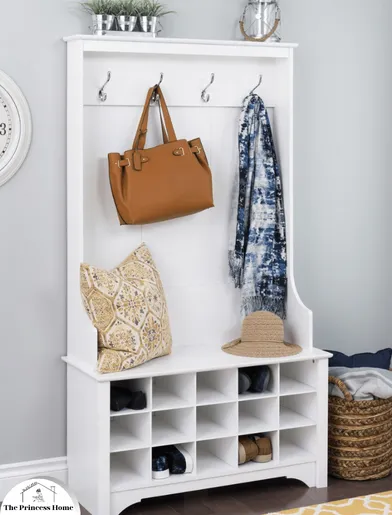
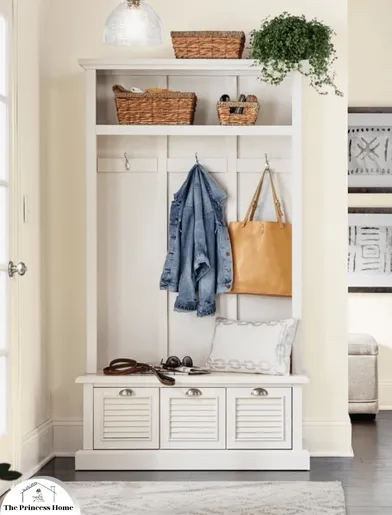
13.*Functional Furniture
One effective way to maximize entryway storage is by investing in multi-functional furniture. Consider a bench or hall tree with built-in storage compartments or hooks. These pieces provide a convenient spot to sit while putting on or taking off shoes, as well as ample storage for items like shoes, scarves, and hats.
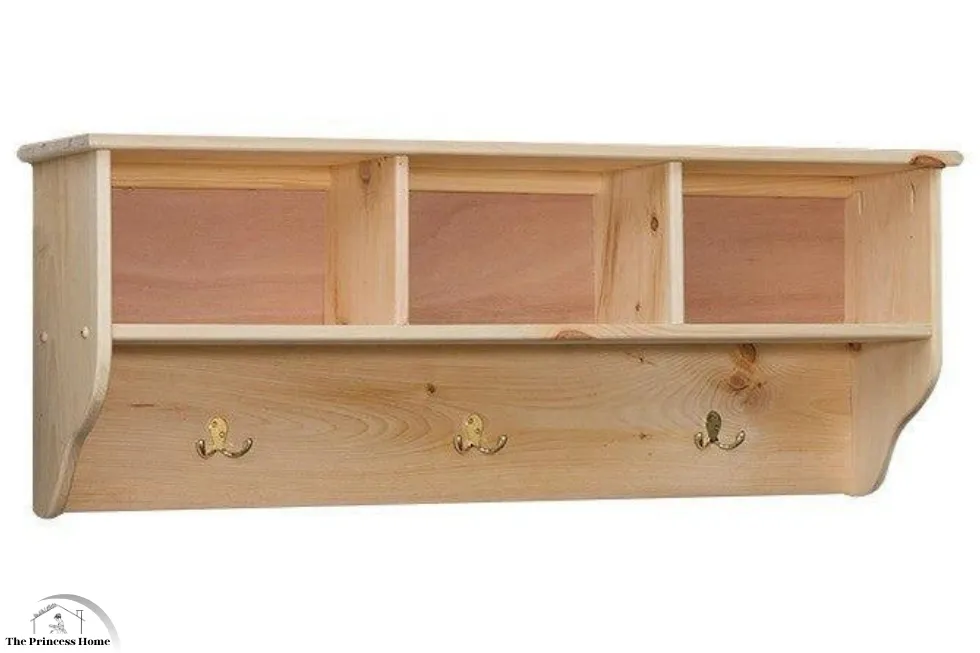
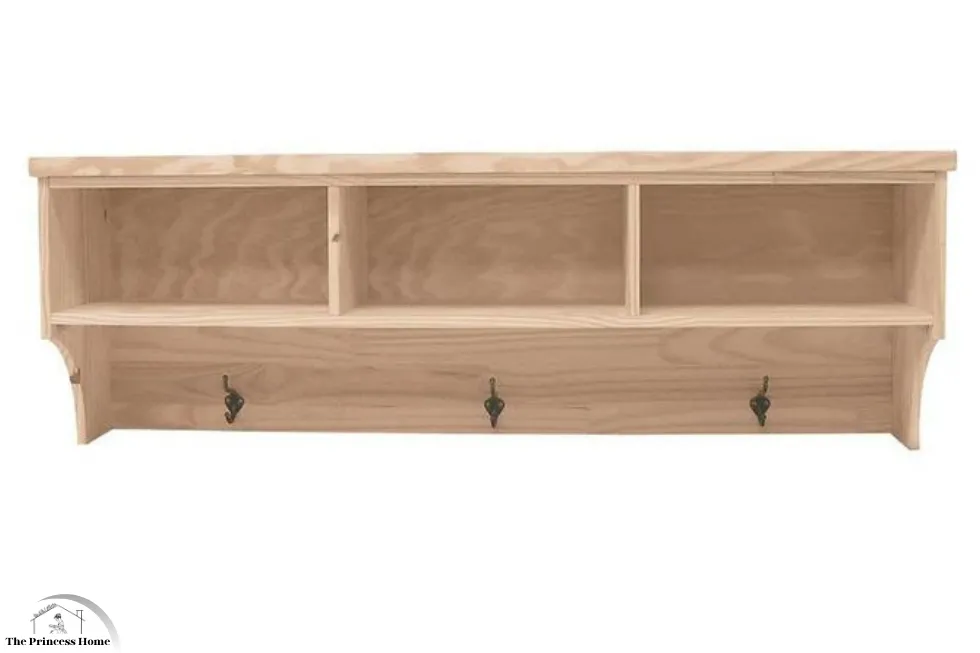
14.*Shelving &Cubbies
Tailoring the storage to your specific needs can be achieved through customized shelving and cubbies. Wall-mounted shelves and cubbies can be designed to accommodate various items, such as keys, mail, and even a designated spot for each family member’s belongings. This not only keeps things organized but also adds a personalized touch to the space.
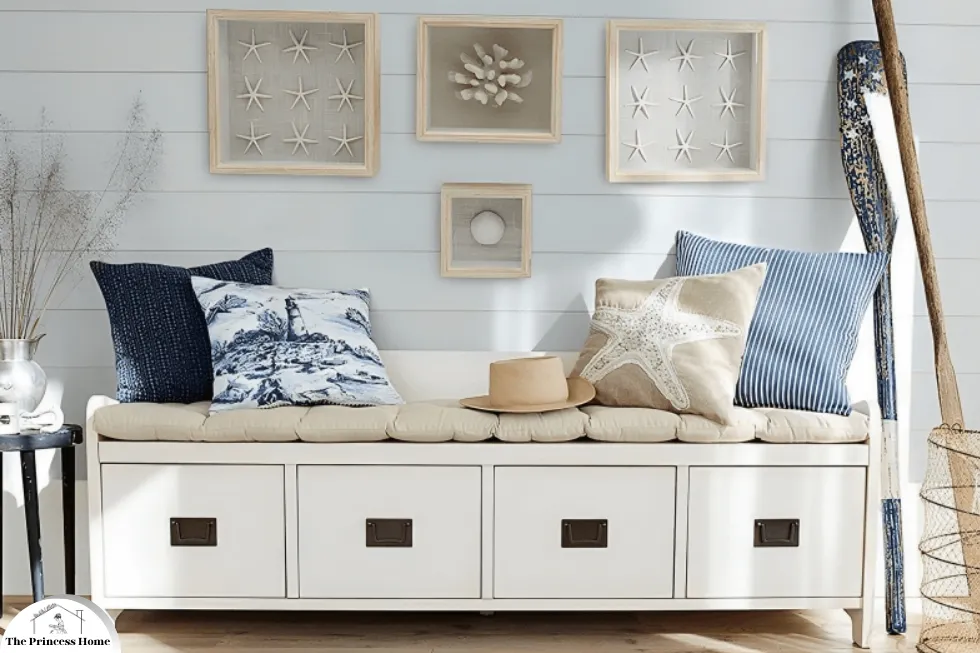
27.*Hidden Storage Furniture
Maximize space with furniture that features hidden storage compartments. Ottoman benches, console tables, or entryway cabinets with concealed storage can be used to keep items like gloves, hats, and pet accessories out of sight, maintaining a clean and organized appearance.
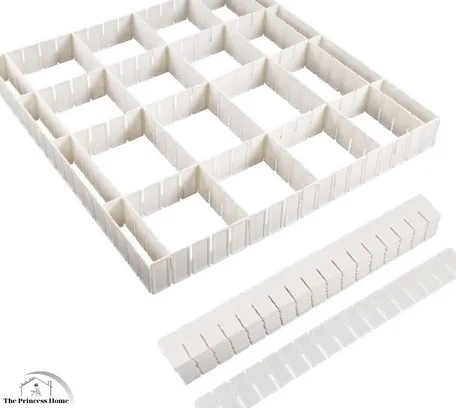
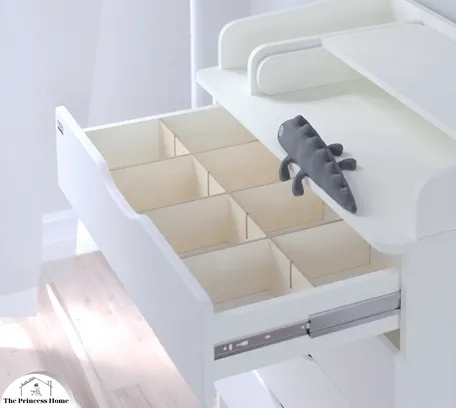
16.*Drawer Dividers
For those with entryway furniture that includes drawers, using dividers can greatly enhance organization. Divide the space into sections to store smaller items like gloves, sunglasses, or even charging cables. This prevents drawers from becoming cluttered and makes it easy to locate specific items when needed.

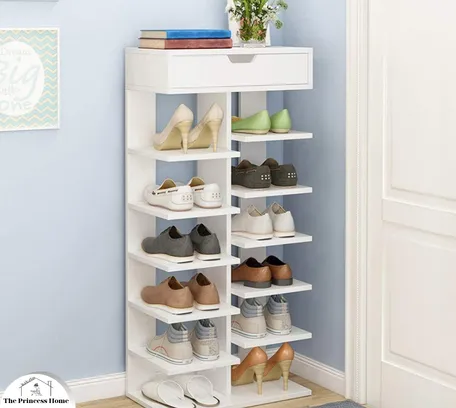
17.*Utilize Vertical Space
Don’t neglect the vertical space in your entryway. Install hooks on the wall for hanging bags, hats, or coats. This not only saves floor space but also keeps frequently used items easily accessible. Consider a tall shoe rack or a vertical organizer for umbrellas and walking sticks.
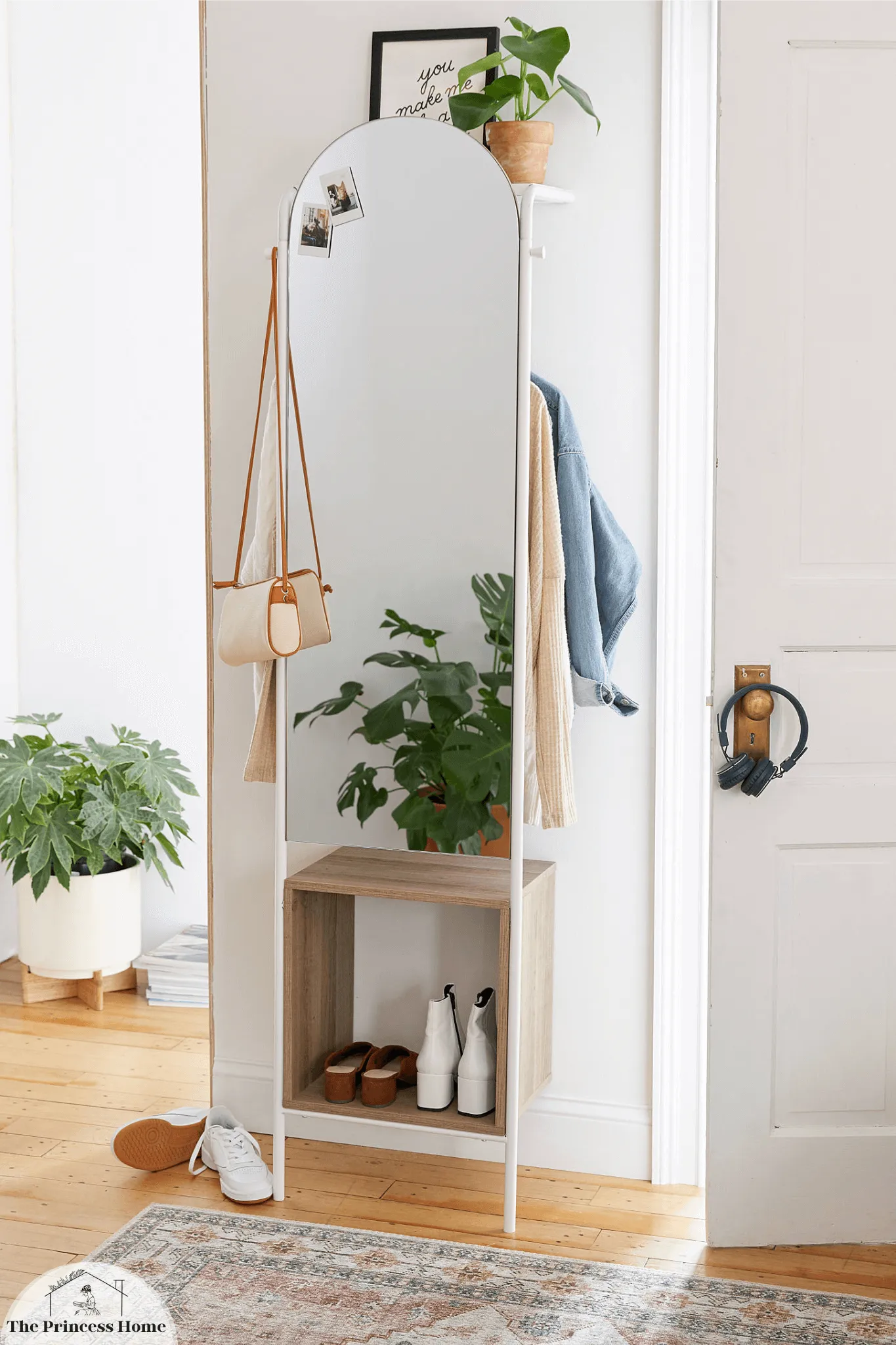
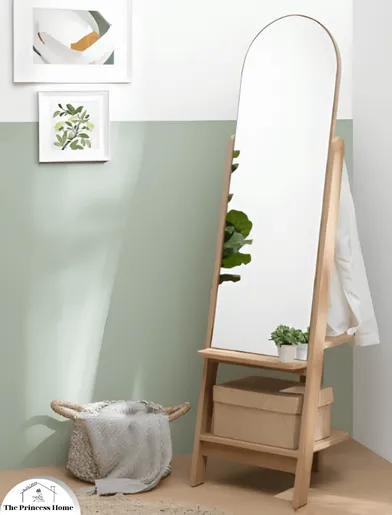
18.*Mirror with Hidden Storage
A full-length mirror with hidden storage behind it can serve both functional and aesthetic purposes. This is an excellent solution for those with limited space, providing a discreet spot to store items like umbrellas, gloves, or even a small first aid kit.
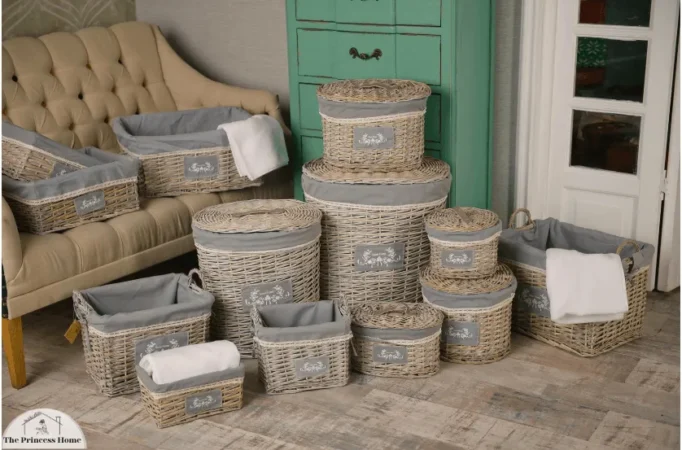
19.*Baskets and Bins
Decorative baskets and bins are not only visually appealing but also incredibly functional. Use them to corral items like shoes, scarves, and hats. Opt for woven or fabric baskets to add texture and warmth to the entryway.
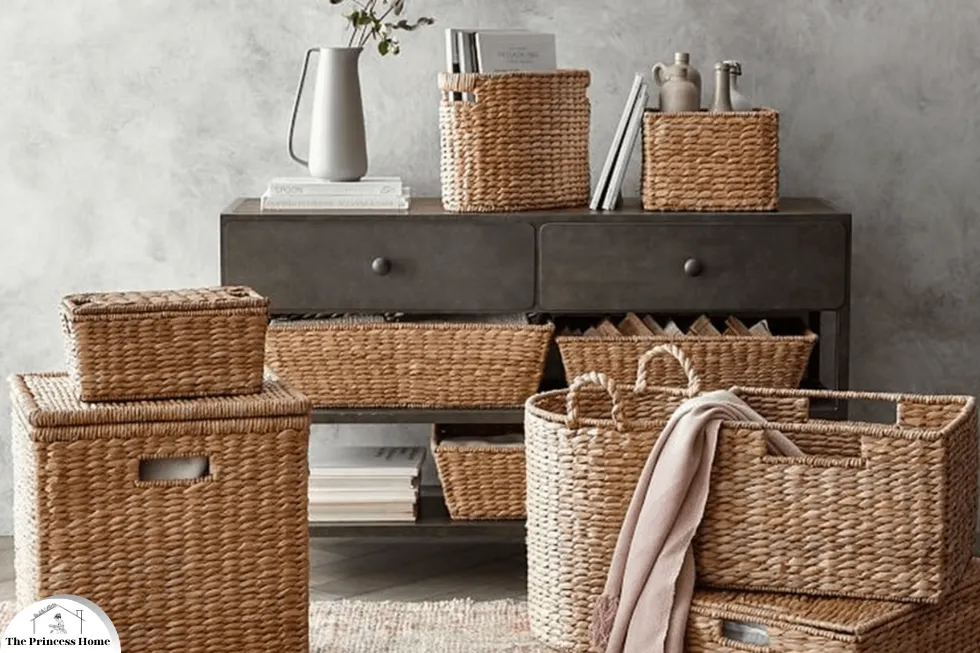
20.*Rotation System
To prevent the entryway from becoming cluttered with seasonal items, implement a rotation system. Store off-season items in labeled bins or baskets in a designated storage area, and switch them out as the seasons change. This keeps the entryway organized and ensures that only necessary items are on display.
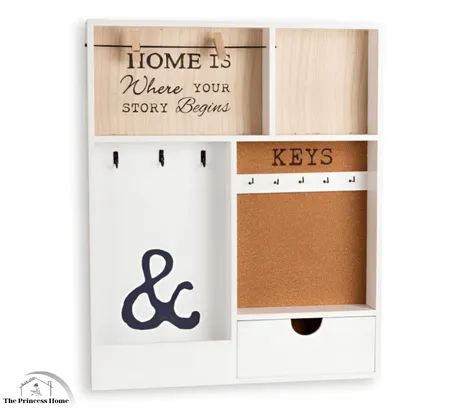
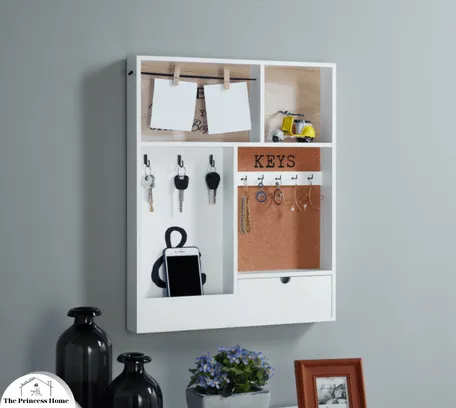
21.*Command Center
Designate a section of your entryway for a command center—a central hub for organizing family schedules, keys, and important documents. Install a corkboard or magnetic board for pinning up calendars, reminders, and invitations. Add hooks for keys, a mail organizer, and a charging station for electronic devices to keep everything in one convenient location.
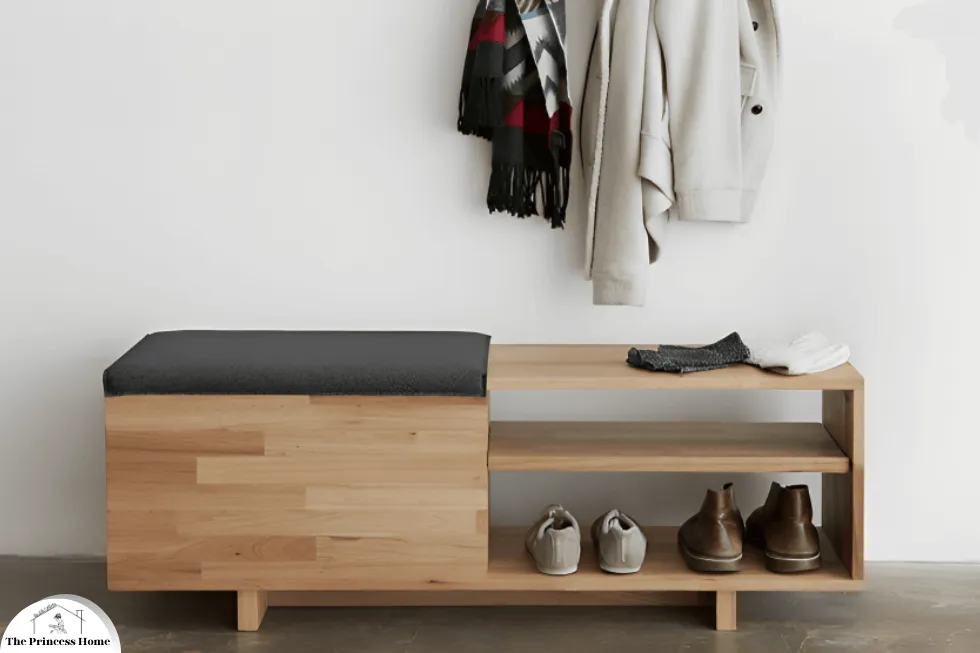
22.*Shoe Bench or Rack
Shoes are a common source of entryway clutter. Invest in a shoe bench with built-in storage or a shoe rack to keep footwear neatly organized. This not only prevents shoes from piling up at the entrance but also provides a comfortable spot to sit while putting on or taking off shoes.
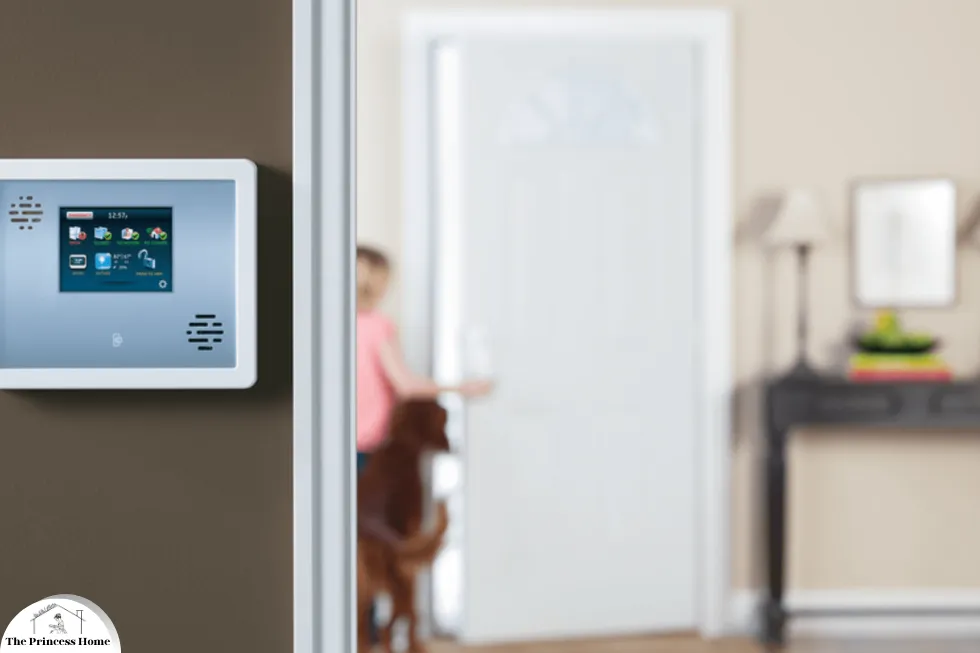
23.*Package Delivery Solutions
Smart Lockers: Use smart lockers or boxes that delivery personnel can access to leave packages securely. Delivery Notifications: Get notified when a package arrives, and monitor the drop-off with integrated cameras.
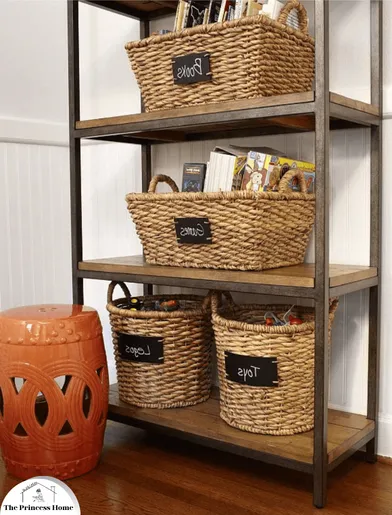
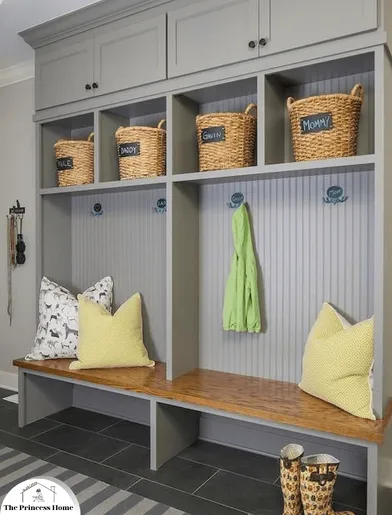
24.*Labeling &Categorization
Maintain order by incorporating a labeling system into your entryway storage. Label bins, baskets, or drawers to clearly indicate the contents. Categorize items based on frequency of use or family members, making it easier for everyone to find what they need without creating unnecessary chaos.
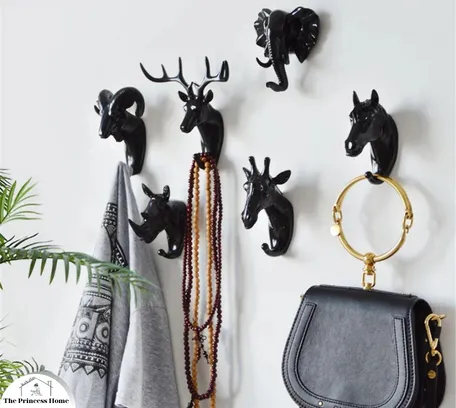
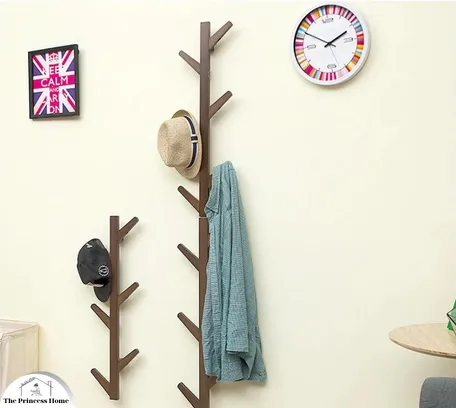
25.*Artistic Wall Hooks
Turn functional storage into a decorative element by using artistic wall hooks. Whether shaped like animals, geometric patterns, or vintage knobs, these hooks can add a touch of personality to your entryway while serving a practical purpose. Hang bags, scarves, or accessories for both style and function.
Conclusion:
Creating a functional and organized entryway involves a thoughtful combination of furniture, storage solutions, and design elements. By implementing these additional tips and ideas, you can customize your entryway to suit the specific needs of your household, promoting efficiency and enhancing the overall aesthetic appeal of this crucial transitional space. Whether you choose to integrate smart technology, embrace artistic elements, or maximize hidden storage, a well-organized entryway contributes to a more comfortable and inviting home environment.
Frequently Asked Questions to Making Your Entryway More Functional ;
Q1: How can I make my entryway more functional?
A: Making your entryway more functional involves optimizing the space to meet your needs. Consider adding hooks or a coat rack for outerwear, a shoe storage solution like a shoe rack or cubbies, and a small table or shelf for keys and mail. Incorporating baskets or bins can help organize smaller items, while a mirror can add both functionality and aesthetics.
Q2: What type of furniture should I include in my entryway?
A: The furniture you choose for your entryway should serve your daily needs. Common options include a coat rack or hooks for hanging coats and bags, a shoe storage unit like a bench with cubbies or a shoe rack, and a console table with drawers or shelves for keys, mail, and decorative items.
Q3: How can I maximize storage in a small entryway?
A: In a small entryway, use vertical space wisely. Install wall-mounted hooks, shelves, or a pegboard to keep items off the floor. Choose furniture that doubles as storage, such as a bench with hidden compartments or a console table with drawers. Consider using slimline furniture to save space while still providing storage.
Q4: What’s the best way to organize shoes in the entryway?
A: Shoe organization can be achieved with a shoe rack, cubbies, or a shoe bench. Shoe racks with multiple tiers can hold several pairs vertically, while cubbies provide individual storage compartments. A shoe bench often combines seating with storage space underneath. Opt for the solution that suits your available space and needs.
Q5: How can I keep my entryway from becoming cluttered?
A: Regularly declutter your entryway by removing items that aren’t used frequently. Use storage solutions like baskets or bins to contain smaller items. Establish a “one in, one out” rule to prevent accumulation. Designate a specific spot for each item and encourage family members to follow the organization system.
Q6: What’s the role of lighting in entryway functionality?
A: Lighting is crucial in the entryway for both functionality and ambiance. Ensure there’s sufficient overhead lighting to illuminate the space. Consider adding task lighting near mirrors or key storage areas. If possible, incorporate natural light through windows or glass elements to create an inviting atmosphere.
Q7: How can I make the entryway a welcoming space?
A: To make your entryway inviting, add personal touches like artwork, decorative accents, or plants. A colorful rug can define the space and add warmth. Incorporate a comfortable seating option like a cushioned bench to make the area more welcoming and functional for putting on shoes or waiting briefly.
Q8: What’s the best way to organize keys and mail in the entryway?
A: Use a small table or wall-mounted shelf near the entryway to keep keys and mail organized. Consider using trays or small baskets to corral these items. Implement a sorting routine to immediately address incoming mail and designate a specific spot for outgoing mail or important documents.
Q9: How do I create a functional entryway in a rental with limitations?
A: In a rental, you can still optimize your entryway with removable solutions. Use adhesive hooks for hanging coats and bags, and consider freestanding furniture like a compact shoe rack or a folding table. Use temporary wallpaper or decals to add personality without damaging walls.
Q10: What’s the importance of a seating option in the entryway?
A: A seating option in the entryway provides a practical space for putting on or taking off shoes. It’s especially useful for households with young children or individuals with mobility challenges. A bench or chair can also make the entryway more inviting and provide a temporary resting spot for guests.


